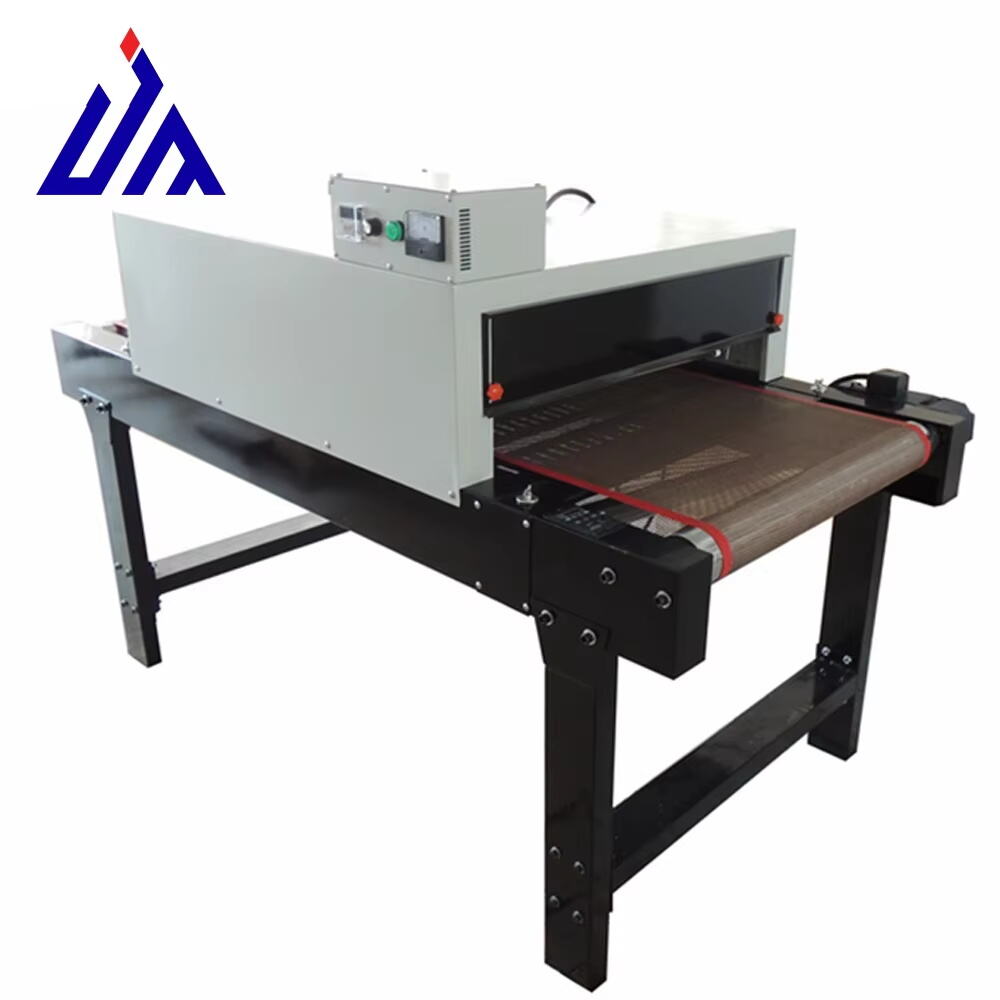Introduction to Industrial Drying Methods
Industrial drying is a critical process used across various manufacturing industries to enhance product quality and stability by removing excess moisture. It is a fundamental step in many production lines, impacting the longevity and usability of the final product. There are several industrial drying methods, each tailored to specific materials and desired outcomes. For instance, tunnel dryers and flash dryers are popular for their efficiency in handling large volumes of material swiftly and uniformly. Drying systems play a pivotal role in reducing moisture content and preventing material spoilage, ultimately bolstering the integrity and marketability of the end product. Understanding these methods helps manufacturers choose the appropriate system to achieve desired product specifications and improve production efficiency.
What is a Tunnel Dryer?
A tunnel dryer is an industrial machine designed for continuous drying processes, using a continuous airflow and material transport system. The operational mechanics involve the movement of goods through a large drying tunnel, where a controlled supply of hot air is directed onto the products. This air is often recycled to maximize heat efficiency, making the process both effective and economical. Continuous drying in a tunnel dryer ensures that product moisture levels are reduced consistently, improving the quality and ensuring uniformity across all products.
Working Principle and Continuous Drying Process
The working principle of a tunnel dryer revolves around its airflow and material transport capabilities. As materials enter the dryer, they are systematically moved along a conveyor belt through zones of controlled temperature and humidity. Air is circulated across the materials either perpendicular or parallel to the flow, depending on the design. This movement mimics an assembly line, where continuous operation leads to consistent drying results, crucial in maintaining efficiency over long production periods.
Typical Applications in Manufacturing
Tunnel dryers are commonly used in various industries, including food, pharmaceuticals, and textiles. In the food industry, they are integral in drying snacks, cereals, and grains to maintain moisture content. In pharmaceuticals, tunnel dryers are used to dry granules and powders, ensuring consistent quality. The textile industry employs these dryers to remove moisture from fabrics and fibers, enhancing product durability and performance.
Operational Efficiency and Infrastructure Needs
When comparing the energy efficiency of tunnel dryers to other drying methods like flash dryers, tunnel dryers tend to be more efficient in handling high volume loads due to their consistent and systematic drying process. However, implementing a tunnel dryer requires significant infrastructure considerations, such as space for the extended machinery and access to stable electrical power and ventilation systems. The upfront investment may be higher, but the long-term benefits include greater throughput and reduced energy costs, justifying their selection for large-scale operations.
What is a Flash Dryer?
High-Temperature Rapid Drying Mechanism
Flash dryers employ a high-temperature rapid drying mechanism that efficiently removes moisture from materials. The process involves passing wet materials through a drying chamber, where they are exposed to high-velocity hot air, leading to swift moisture evaporation. The effectiveness of flash drying is largely due to the heat transfer methods involved, primarily conduction and convection. These methods ensure that the thermal energy is efficiently transferred from the hot air to the moist material, resulting in quick drying times. This rapid drying mechanism makes flash dryers ideal for industries needing fast moisture removal without compromising on product quality.
Ideal Uses in Screen Printing and Textiles
Flash drying technologies are particularly beneficial in screen printing and textiles industries, offering quick drying solutions essential for efficient production. In screen printing, flash dryers are used to rapidly dry ink layers, allowing for multi-color prints with layers applied closely together. Textiles benefit from flash drying by accelerating the drying of fabrics post-dyeing or after special finishes are applied. For instance, a study in textile manufacturing demonstrated a 30% increase in throughput with flash drying, illustrating significant efficiency gains. This drying method thus plays a pivotal role in enhancing production speed and quality in these sectors.
Short Residence Time and Evaporative Cooling
Flash dryers boast a short residence time, which is the duration the material spends in the drying chamber. This short interval ensures quick processing and uninterrupted production flow. The rapid movement through the drying chamber minimizes exposure to high temperatures, protecting the integrity of heat-sensitive products. Additionally, the evaporative cooling effect observed during flash drying contributes to maintaining product quality. As moisture rapidly evaporates, it absorbs heat, cooling the material surface slightly, thus preventing overheating. This balance of drying speed and cooling effect makes flash dryers particularly advantageous for preserving the quality of sensitive materials.
Key Differences Between Tunnel Dryers and Flash Dryers
Drying Speed: Batch vs. Instantaneous Processing
When comparing drying technologies, the speed of processing stands out as a significant difference. Tunnel dryers operate using a batch processing method, where materials are dried over a prolonged period. This method, though effective for certain industries, is slower compared to flash dryers, which are known for their instantaneous processing capabilities. Flash drying, as the name suggests, rapidly removes moisture from materials almost immediately after heat application. This makes flash dryers particularly appealing in industries where speed is critical, such as food processing and pharmaceuticals.
Energy Consumption: Long-Term vs. Immediate Heat Demand
Energy consumption patterns are crucial when evaluating drying systems. Tunnel dryers typically involve long-term energy use, as the drying process takes longer and requires sustained heat over extended periods. Conversely, flash dryers demand immediate heat, leading to significant instantaneous energy use but potentially lower long-term costs due to their rapid drying nature. For example, a facility requiring continuous operation may find the energy savings of flash drying beneficial, whereas tunnel drying might be more suitable for applications that allow for staggered drying schedules.
Space Requirements: Large-Scale vs. Compact Systems
The space required for installation is another critical factor differentiating tunnel dryers from flash dryers. Tunnel dryers, being larger and reliant on batch processing, often require significant space, making them suitable for facilities with ample room. On the other hand, flash dryers are compact systems, ideal for locations where space is limited. For instance, a plant looking to optimize floor space may prefer a flash dryer due to its small footprint, while a large-scale operation with dedicated drying areas might opt for tunnel dryers.
Pros and Cons of Each Drying System
Tunnel Dryer Advantages: High Volume and Uniformity
Tunnel dryers stand out for their ability to handle high-volume production lines efficiently. These dryers uniquely accommodate large quantities of materials, making them invaluable for industries with extensive drying needs, such as food processing and textiles. A key advantage of tunnel dryers is their capacity for uniform drying, ensuring consistent product quality across entire batches. Uniform drying eliminates moisture variations in the end product, which is critical for maintaining quality standards in pharmaceuticals and food preservation. Thus, for operations where volume and consistency are paramount, tunnel dryers present a significant advantage.
Tunnel Dryer Limitations: High Energy and Space Costs
Despite their advantages, tunnel dryers come with drawbacks, primarily related to their high operational costs. The most pressing issue is energy consumption, as these systems require continuous heating over extended periods. For instance, a typical tunnel dryer might consume up to 500 kW of power, resulting in substantial energy expenses over time. Additionally, tunnel dryers demand significant floor space, often necessitating large-scale facilities. This spatial requirement can lead to increased costs, both in terms of facility leasing and maintenance. Consequently, businesses must weigh these costs against the benefits of uniform, high-volume drying when considering tunnel dryers.
Flash Dryer Benefits: Speed and Versatility
Flash dryers excel in scenarios where speed and versatility are critical, offering significant advantages in various industrial applications. These dryers operate with exceptional speed, achieving drying within seconds, making them ideal for environments with time-sensitive requirements. Furthermore, flash dryers are versatile, capable of handling a wide range of materials, from chemicals and minerals to heat-sensitive pharmaceutical ingredients. This flexibility allows their use across multiple sectors, including pharmaceuticals, food processing, and material handling. For businesses needing a drying solution that combines rapid processing with adaptability, flash dryers are an optimal choice.
The Difference Between Tunnel Dryer and Flash Dryer
The key differences between tunnel dryers and flash dryers lie in speed, energy consumption, and their range of applications. Tunnel dryers are designed for high-volume production and ensure uniform drying, making them ideal for industries processing large batches. However, they are slower compared to flash dryers and tend to consume more energy due to their prolonged operation. On the other hand, flash dryers function at impressive speeds, efficiently drying materials in a fraction of the time, which makes them suitable for industries requiring rapid processing and dealing with varied inputs. These distinctions critically influence decision-making in industrial settings, where considerations of operational efficiency, cost, and specific material requirements are paramount.
FAQs
What are the main advantages of using tunnel dryers in manufacturing?
Tunnel dryers are advantageous for their ability to handle high-volume production lines and provide uniform drying across all products. They are invaluable in industries like food processing and textiles, where consistent moisture removal is crucial.
In which industries are flash dryers most commonly used?
Flash dryers are widely used in industries requiring rapid moisture evaporation, such as screen printing, textiles, pharmaceuticals, and food processing. Their speed and adaptability make them ideal for environments requiring quick drying solutions.
How do tunnel dryers and flash dryers differ in terms of energy consumption?
Tunnel dryers generally have a higher energy consumption due to prolonged drying periods, whereas flash dryers use significant energy instantaneously but for shorter durations, potentially leading to lower overall energy costs.

